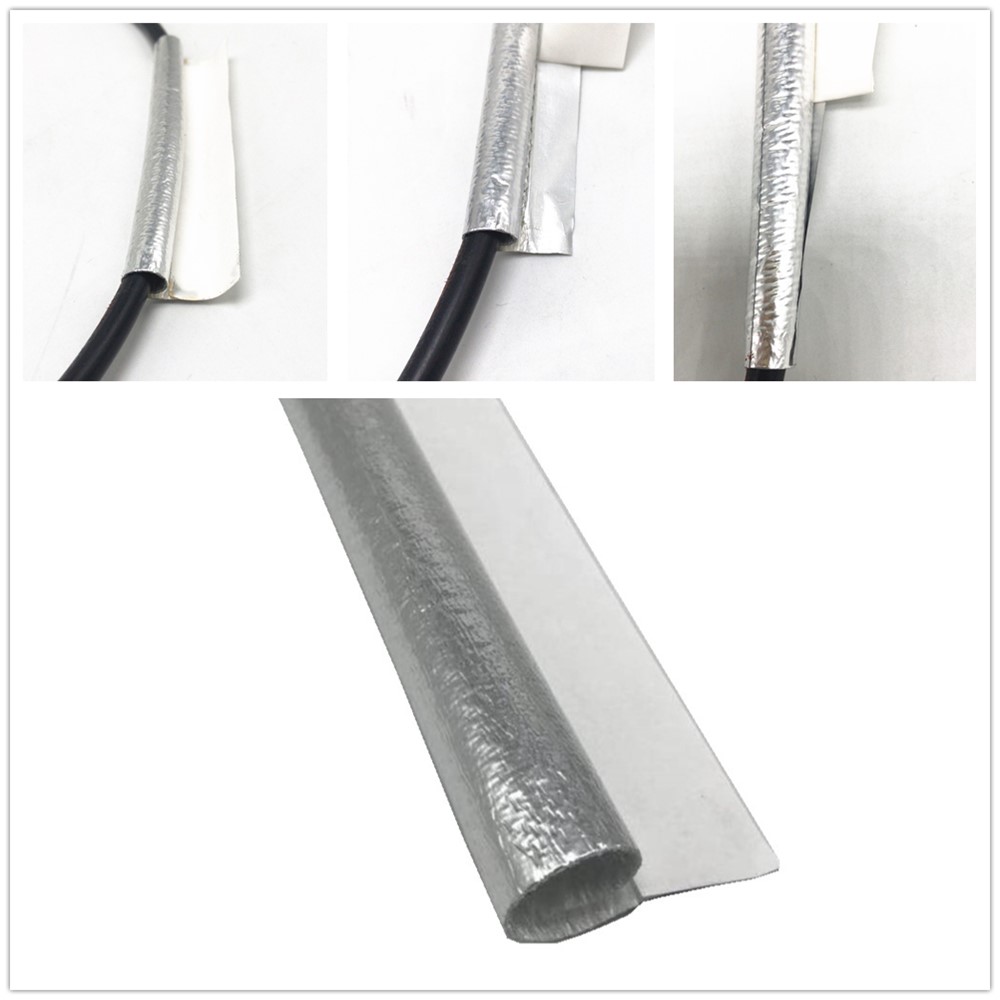Composition
Aluminum Layer: The outer layer is made of aluminum, which reflects radiant heat away from the protected components.
Fiberglass Core: The inner layer is typically made of fiberglass, which provides thermal insulation and resistance to high temperatures.
Self-Wrapping Design: The sleeve is designed to wrap around the components easily, allowing for quick and convenient installation without the need to disconnect or disassemble existing setups.
Features
Heat Resistance: The sleeve can withstand high temperatures, often up to several hundred degrees Celsius, depending on the specific product.
Reflective Surface: The aluminum layer reflects radiant heat, reducing the temperature exposure to the underlying components.
Flexibility: The self-wrapping design allows it to conform to various shapes and sizes, making it versatile for different applications.
Durability: The combination of aluminum and fiberglass makes the sleeve resistant to abrasion, chemicals, and other environmental factors.
Applications
Automotive: Used to protect hoses, wires, and cables in engine compartments from heat generated by the engine and exhaust systems.
Aerospace: Provides thermal protection for wiring and hydraulic lines in aircraft.
Industrial: Used in manufacturing settings to protect electrical cables and hoses from heat generated by machinery and industrial processes.
Electronics: Helps in shielding sensitive electronic components from overheating in various devices and systems.
Benefits
Improved Safety: By reflecting heat and providing insulation, the sleeve helps prevent overheating and potential failures in critical systems.
Extended Component Life: Reduces thermal degradation of hoses, wires, and cables, thereby extending their lifespan.
Ease of Installation: The self-wrapping design allows for quick and tool-free application, which is especially beneficial in maintenance and repair scenarios.
Overall, the heat reflective Aluminum Fiberglass Self-wrappable Sleeve is a crucial component in environments where high temperatures pose a risk to the functionality and longevity of hoses, wires, and cables.

